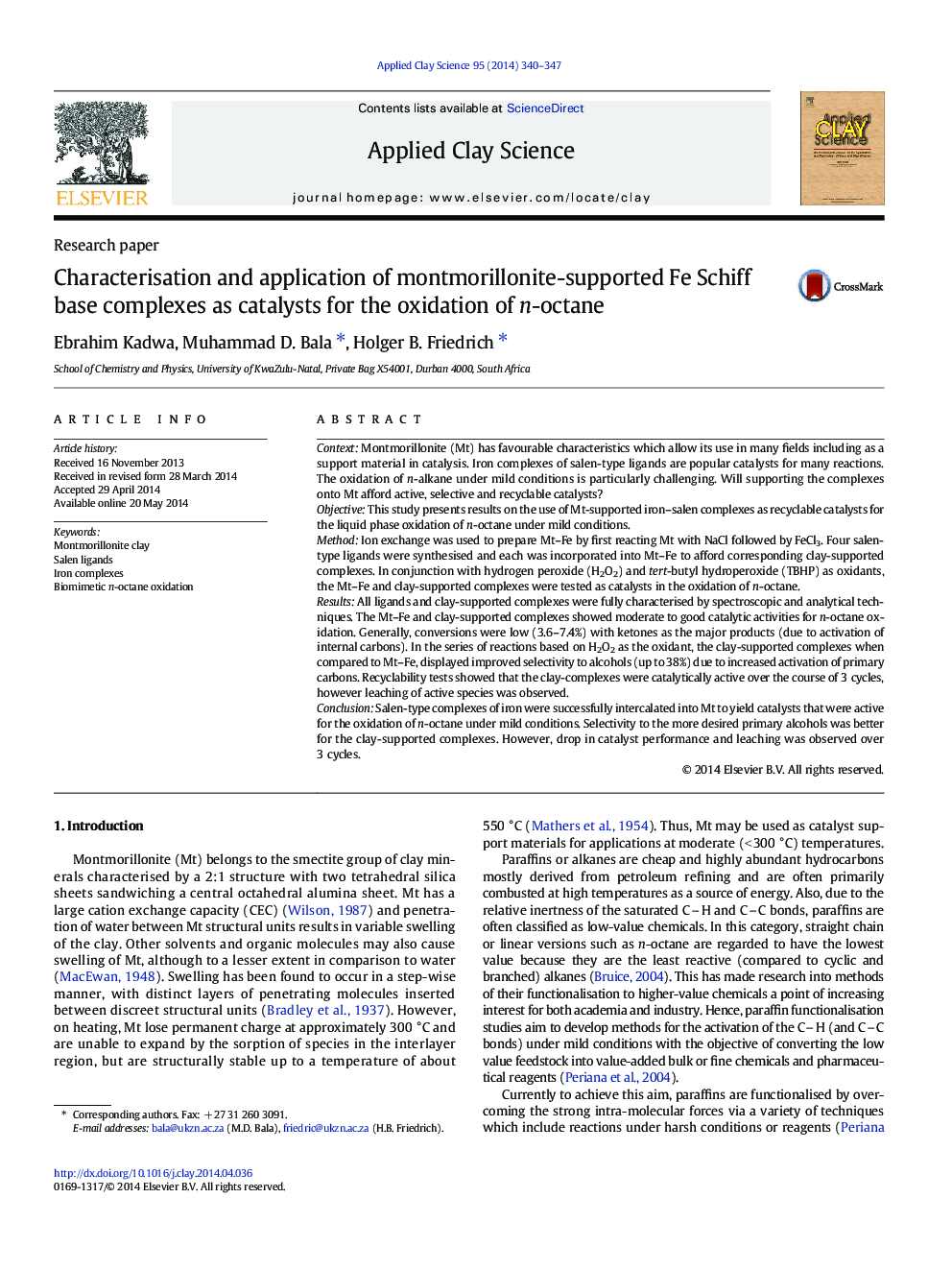| کد مقاله | کد نشریه | سال انتشار | مقاله انگلیسی | نسخه تمام متن |
|---|---|---|---|---|
| 1694826 | 1519082 | 2014 | 8 صفحه PDF | دانلود رایگان |

• Montmorillonite has been used as a support material for four iron–salen complexes.
• All the complexes were successfully intercalated into the support.
• The supported complexes were applied as catalysts for the oxidation of n-octane.
• Recyclability tests for leaching were successfully conducted over three cycles.
ContextMontmorillonite (Mt) has favourable characteristics which allow its use in many fields including as a support material in catalysis. Iron complexes of salen-type ligands are popular catalysts for many reactions. The oxidation of n-alkane under mild conditions is particularly challenging. Will supporting the complexes onto Mt afford active, selective and recyclable catalysts?ObjectiveThis study presents results on the use of Mt-supported iron–salen complexes as recyclable catalysts for the liquid phase oxidation of n-octane under mild conditions.MethodIon exchange was used to prepare Mt–Fe by first reacting Mt with NaCl followed by FeCl3. Four salen-type ligands were synthesised and each was incorporated into Mt–Fe to afford corresponding clay-supported complexes. In conjunction with hydrogen peroxide (H2O2) and tert-butyl hydroperoxide (TBHP) as oxidants, the Mt–Fe and clay-supported complexes were tested as catalysts in the oxidation of n-octane.ResultsAll ligands and clay-supported complexes were fully characterised by spectroscopic and analytical techniques. The Mt–Fe and clay-supported complexes showed moderate to good catalytic activities for n-octane oxidation. Generally, conversions were low (3.6–7.4%) with ketones as the major products (due to activation of internal carbons). In the series of reactions based on H2O2 as the oxidant, the clay-supported complexes when compared to Mt–Fe, displayed improved selectivity to alcohols (up to 38%) due to increased activation of primary carbons. Recyclability tests showed that the clay-complexes were catalytically active over the course of 3 cycles, however leaching of active species was observed.ConclusionSalen-type complexes of iron were successfully intercalated into Mt to yield catalysts that were active for the oxidation of n-octane under mild conditions. Selectivity to the more desired primary alcohols was better for the clay-supported complexes. However, drop in catalyst performance and leaching was observed over 3 cycles.
Figure optionsDownload as PowerPoint slide
Journal: Applied Clay Science - Volume 95, June 2014, Pages 340–347